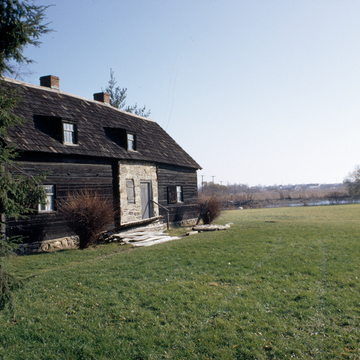Where English settlers brought brick building techniques, Swedish settlers brought hewn-log construction techniques that were quickly adapted across the region and were then taken west by the pioneers who flowed out of Pennsylvania. Windows have replaced the original sliding panels, but this one-room cabin with clapboarded end gables represents a rare survivor of the first European settlers. The building is open to the public.
A more complicated example is the Morton Homestead at 100 Lincoln Avenue in Prospect Park borough, which was preserved for its presumed association with John Morton, signer of the Declaration of Independence. It began as a single-cell cabin of hewn squared logs with dovetailed corners c. 1654 but was extended by a second cell at the end of the seventeenth century. Both pieces were joined by a second story that spanned the two buildings. It is now a museum of early Swedish life.


